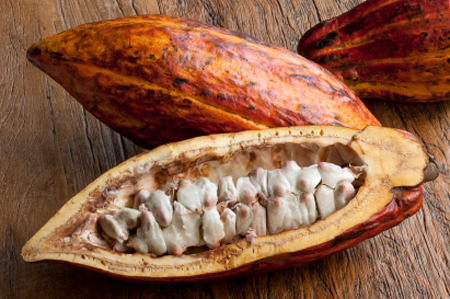The harvest may decline 13 percent to 325,000 metric tons from 2014, according to Zulhefi Sikumbang, chairman of the Indonesia Cocoa Association. The El Nino-induced dry weather may hurt flowering during the second harvest from September to December, he said on Wednesday.
A smaller Indonesian harvest may add to concerns that global supplies will be squeezed this year as dry weather also threatens the crop in Ghana, the biggest producer after Ivory Coast. Futures in New York are about 9 percent higher this year, heading for a fourth straight annual increase in contrast to losses in most commodities including sugar and coffee.
“Cocoa is a very sensitive crop to weather changes,” Sikumbang said by phone from Bali. “We had good weather during the main harvest in May to June and our concern is the second harvest. Prolonged dryness may shed flowers, potentially cause a failed harvest.”
Farmers may reap 70 percent less beans in the second harvest than a year earlier if the El Nino strengthens, Sikumbang said. The mid-crop typically accounts for about 30 percent of the nation’s total output, he said.
A moderate El Nino that has caused a dry spell in the southern regions in Indonesia will strengthen from August to December, with the impact to be seen in areas including Lampung, South Sumatra, Java and South Sulawesi, the Meteorology, Climatology and Geophysics Agency said July 30.
Switching Crops
Sulawesi in eastern Indonesia is the country’s main cocoa growing region. Lampung on Sumatra island and Java also produce cocoa. Bean production may further decline as farmers shift to crops such as rice and corn, Sikumbang said.
El Ninos can affect weather worldwide by baking Asia, altering rainfall across South America and bringing cooler summers to North America. The first El Nino since 2010 has already reduced rainfall across Southeast Asia and is hurting crop yields, according to the United Nations.
Long-term dryness is still a concern across Java and southwestern Sulawesi and no improvement in weather is expected in the coming days, Kenny Miller, meteorologist at MDA Weather Services said in a note on Aug. 4.
Indonesia may boost imports to offset the decline in cocoa production as domestic demand increases, Sikumbang said. Overseas purchases will probably jump to 150,000 tons this year from 109,000 tons in 2014, while exports may slump to 35,000 tons from 68,000 tons, he said.


